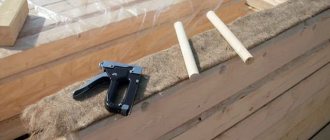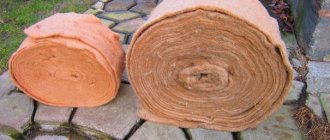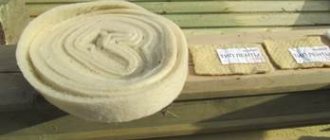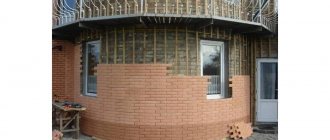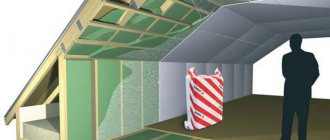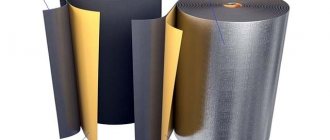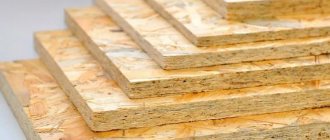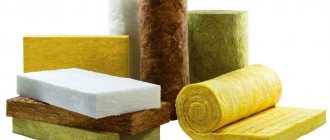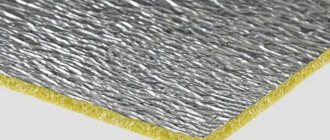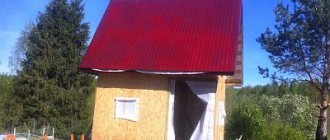Purpose of interventional insulation
Inter-crown insulation is a special type of heat-insulating materials that are laid between the crowns of a wooden building (house, bathhouse, utility room) to eliminate gaps. They can be loose (tow, moss) or in the form of ribbons (felt, batting).
The main task of such insulation is to create comfortable living conditions inside the house. Interventional insulation creates a favorable microclimate only if it can:
- keep the house warm in winter and prevent it from overheating in summer;
- avoid drafts;
Insulation of a log house with moss.
- compensate for changes in the linear dimensions of wood that appear during drying or swelling during changes in environmental humidity (so that cracks do not appear);
- protect owners from unnecessary noise;
- prevent insects from appearing in the house;
The main functions of interventional insulation.
- prevent the colonization of inter-crown space by microorganisms.
In order to perform its assigned functions, inter-crown insulation for timber (logs) must have a certain set of quality characteristics.
Jute insulation
Perhaps the most common plant grown to make insulation is jute.
This is a photo of jute in a roll as inter-crown insulation for 150x150 mm timber.
It is what is most often used as a sealant for inter-crown joints. This material is similar to flax, however, due to the fact that it contains coarser fibers, it sticks together under the influence of loads in a wooden frame. Despite the fact that the cost of such material is slightly higher, it best meets the price-quality ratio.
Jute insulation is currently an excellent alternative to expensive caulk. In this case, jute looks like a dense tape with a uniform base. Such material is rolled out directly along the groove while simultaneously being fixed with a special construction stapler.
Jute insulation is created from plants of the linden family. This fiber is hygroscopic, extremely durable, and it contains a large amount of lignin, which makes jute so similar to wood.
After the frame is completely laid, the material will become even more compact due to its composition - thus, the jute fibers will stick together and become as resistant to high humidity and wind as possible. As a result of such caulking, the walls will turn out to be very neat, with seams that have an ideal surface. And also very warm and without the need for additional finishing. In addition, unlike linen material, the jute seal spreads very easily over the crowns and has a uniform thickness.
Operational Requirements
High-quality insulation for the crowns of a wooden house must have:
- low level of thermal conductivity to ensure minimal heat loss - the best performance for natural materials;
- high vapor permeability - the walls must breathe, ensuring natural air exchange between the street and the room;
- the ability to absorb moisture well and quickly release it (dry), which allows you to maintain the same moisture content of the timber or log around the entire circumference (the processes of the occurrence of multidirectional stresses inside the timber, leading to its cracking, and the appearance of mold (rot) between the crowns are eliminated). The best in this indicator are flax and jute, but synthetic heat insulators do not absorb liquid - it remains on the fibers. Therefore, artificial insulation materials are not used in bathhouses - the walls will begin to rot;
- uniform density - there will be no cold bridges;
- high elasticity, which allows you to tightly close the gap between the crowns when the house shrinks and the walls swell or dry out;
- resistance to fungus and mold;
- resistance to ultraviolet radiation (sun) and the vagaries of nature (rain, snow, heat, frost);
- long service life comparable to the durability of a house;
- optimal ratio between thickness and density (indicators are given in Table 1);
Table 1. Optimal ratio of thickness and density.
| Thickness, mm | Density, g/m2 |
| 5 | 400 |
| 6-7 | 600 |
| 8-10 | 600-700 |
| 10-15 | 800 |
- environmentally friendly - does not contain components harmful to health;
- sufficient tape width. There are 2 rules here.
- At frost temperatures of -20oC, the width of the thermal insulator should be at least 10 cm, -30oC - 12 cm or more, -40-50oC - 14-18 cm.
- Insulation that is 5 mm smaller in width than the groove will help you get a beautifully designed inter-crown space. If further insulation of the gap is planned with the same material (caulking), the tape should be 10-15 cm larger than the contact area of the crowns.
What materials are unsuitable for inter-crown insulation of timber 150x150 and 200x200?
According to many customers, one of the worst options is mineral wool. Often this material is used to insulate a log house, but in fact it cannot serve these purposes in any way, because it has practically no moisture absorption. Water entering mineral wool is held in place by the tension of the fibers and, as a result, does not disappear anywhere. In addition, this material successfully transmits heat.
Another material that has often been used to insulate timber is isover. However, it is important to know that where there is no gap, this material between the crowns is almost completely compressed, and therefore the heat transfer of such material is much less than that of the same moss or jute.
But where there are gaps, the material fluffs up and copes with its main functions quite well. If you look from the other side, the isover copes with the “cycle” of moisture quite well, but it does not need to be caulked, it will not rot over time, will not burn, and after several years it will not turn into dust. As for small dust, it can be successfully removed using a sealed finish with jute rope. But we still do not recommend using it. This insulation has strong allergic qualities to people and reduces all the benefits of a wooden log house no no!!! Keep this in mind.
Watch the expert video:
Now let’s answer the question - why houses made of timber are popular and interesting for many lovers of country life:
If we take wood construction, it has always been very popular and relevant. However, lately this has been felt extremely acutely. This fact can be explained by the presence of a wide variety of various advantages that characterize absolutely any structure made of timber.
Firstly, this is the highest level of quality and reliability. Indeed, today there is a wide variety of different methods of processing wood, as a result of which it becomes even more reliable. Resistance to such external adverse influences as humidity, temperature changes, exposure to high or low temperatures, and all kinds of insects appears. Also, with proper storage rules, the tree is extremely resistant to all kinds of mechanical stress. During a long stay in the ground or in some humid environment, signs of rot do not appear. All this has an extremely positive effect on the longevity of wood buildings.
Also, houses made of timber, as well as those from any other city, are characterized by incomparably favorable microclimate conditions. This is expressed by the fact that the room is constantly maintained at an extremely optimal level of humidity and oxygen content. Similarly, the same thing would be fair to say about the temperature regime, which is always in a range where a person is neither cold nor hot.
This is especially noticeable in winter and summer. After all, it is no secret to anyone that in the winter months it is always warm in a house made of wood, but in the summer, on the contrary, it is somewhat cool. Also, due to its physical and chemical characteristics, wood carries out constant air exchange. However, the matter does not end there. In addition, there is continuous filtration of the incoming air. This allows you to avoid the presence of harmful substances and compounds in the room.
Synthetic insulation
Synthetic thermal insulation for the gaps between the crowns of the wall is represented by polyester fibers. The general advantages of this type of insulation include:
- durability - manufacturers talk about a service life of 100 years;
- low thermal conductivity coefficient;
- vapor permeability;
- elasticity (volume is restored by 90% after prolonged compression);
- frost resistance.
There are two disadvantages:
- high cost of 1 linear meter;
- do not absorb water, as a result of which a greenhouse effect occurs indoors, and the wood becomes moldy. Therefore, good ventilation of the house and careful wood processing are needed.
The result of using low-quality synthetic inter-crown insulation is fungus at the joints of the crowns.
The best representatives in the segment of synthetic insulation are “Holofiber” and “PoliTerm”.
"Holofiber"
Inter-crown insulation “Holofiber” (translated as “hollow thread”) is one of the varieties of padding polyester known to everyone. It is a springy polyester fiber molded into a tape that perfectly adapts to changes in the linear dimensions of wood during deformation due to shrinkage or changes in humidity. This property is especially valuable for a log house made of sawn timber without grooves. The insulation perfectly holds the volume, ensuring complete tightness, so that re-caulking is not done.
Holofiber insulation.
It goes on sale in rolls and sheets of different densities and elasticity, which allows you to make a choice based on the characteristics of the wood.
Among the advantages :
- excellent elasticity;
- good noise and thermal insulation properties;
- long service life;
- simple installation;
- no need for re-caulking;
- environmental cleanliness;
- resistance against negative biological factors (birds do not carry, insects do not appear).
Negative include :
- “biting” price;
- artificial origin;
- there is a risk of mold or a special type of rot, about which people say: “the tree is rotting.”
"PolyTerm"
Insulation of gaps between the crowns of a wooden house "PoliTerm" is the result of the work of Finnish technologists. Let us immediately note two features:
- when developing the heat insulator, “Holofiber” was taken as a basis, as a result, the result was a type of padding polyester insulation;
- short production period (appeared on the market about 10 years ago), and therefore we cannot give an objective assessment of the advantages and disadvantages of the material (manufacturers can say whatever they want).
What is beyond doubt is:
- convenient release form - in the form of an adhesive tape;
- resistance to any vagaries of nature;
- high price (10-12 times more expensive than jute tape);
- lack of vapor permeability.
Insulation "PolyTerm".
Sold in the form of tapes with a width of 30 to 250 mm and a thickness of 80-200 mm.
How to choose inter-crown insulation for timber: what types are there and what to pay attention to when laying
Despite the constantly growing range of modern building materials, no one is in a hurry to abandon the use of natural wood for the construction of houses. You can even probably even notice the opposite trend - the popularity of wooden construction is only growing, apparently because there is something to compare with, and these comparisons only play into the hands of the natural material. Indeed, if we evaluate the totality of qualities - accessibility, low thermal conductivity, ease of processing, absolute environmental friendliness, the ability to create a completely unique healthy atmosphere in the house - not a single innovative material can compare with wood.
Interventional insulation for timber: which one to choose?
Of course, wood also has its drawbacks, and some of the main ones can be considered the lack of plasticity and the tendency to deform when external conditions change. No matter how precisely the parts for the construction of log or timber walls are adjusted, it is still impossible to achieve a complete absence of gaps between them. This means that it will be necessary to provide a seal between the elements of the log house. For these purposes, a special material is used - inter-crown insulation for timber - this publication will tell you which one to choose.
Expert opinion: Afanasyev E.V.
Chief editor of the Stroyday.ru project. Engineer.
Even if the future owner of the house does not have carpentry skills and is going to involve a team of specialists in the construction of the log house, it will never be a bad idea to supervise their work. Unfortunately, there are often “schemers” who, trying to extract the maximum benefit and speed up the work, resort to all sorts of unscrupulous “tricks”, the consequence of which can be poor insulation and ventilation of the walls. This is often discovered only after some time, with the onset of cold weather, and often correcting such defects even requires a complete overhaul. It is better to keep this under constant control.
What is the main point of using interventional insulation?
Before moving on to considering the types of inter-crown insulation, it is necessary to briefly discuss its purpose - this will make it easier to subsequently make the right informed choice.
- The use of such material significantly enhances the natural thermal insulation qualities of wood. The cold does not penetrate through the joints deep into the log walls, the wood freezes less on the outside, and this means a reduction in the number of cracks that appear, and, by and large, an overall increase in the entire service life of a wooden house.
Poor quality insulation of joints between logs or beams leads to deeper freezing of the walls and the rapid appearance of extensive cracks
- High-quality inter-crown insulation compensates for fluctuations in the volume of wood when it dries out or, conversely, swells from high air humidity.
- Properly installed insulation prevents water or excess moisture from entering the gaps between the beams, which can activate wood rotting processes or become a favorable environment for the development of foci of fungus or mold.
A very sad picture - the log house is infected with a fungus precisely at the joints between the beams
- Properly selected inter-crown insulation will become a barrier against insects entering the house.
- The compacted joints between the beams not only prevent the room from being blown out and cooled down, but at the same time the level of noise penetrating from outside is sharply reduced.
- High-quality inter-crown insulation does not disturb the normal balance of humidity and temperature in any weather conditions - the most important advantage of wood is preserved - the ability of walls to “breathe”
So, the importance of this material for the construction of a high-quality and durable log house is difficult to overestimate. It remains to find out what types of interventional insulation exist, and what advantages and disadvantages they have.
Types of interventional insulation and their specific features
It would be a big mistake to believe that any available material will be suitable for insulating roof joints. It happens that the low price of some thermal insulation materials provokes buyers into an ill-considered purchase, for example, mineral wool, but the result is sad.
Special operating conditions require inter-crown insulation and corresponding characteristics - low thermal conductivity, mandatory elasticity and the ability to restore volumetric shapes after compression, durability, strength of the fiber structure to fractures, resistance to biological decomposition, to exposure to the sun, high and low temperatures, and at the same time preserved its naturalness, remaining completely “clean” and harmless from an environmental point of view.
Interventional insulation under conditions of strong compression between beams or logs should not cake, lose elasticity and thermal insulation qualities
It is quite difficult to select a material that would fully meet all the stated requirements. Nevertheless, a number of natural or synthetic insulation materials are very close to perfection, which is why they are widely used specifically for wooden construction.
Natural interventional insulation
The history of wooden architecture goes back centuries, and people have always faced the problem of insulating their homes. Naturally, a variety of natural materials that were available were used. Gradually, a kind of “selection” took place - materials that did not live up to expectations went out of use, and those that proved their worth are still actively used to this day.
Moss is a material for insulating log houses
Residents of the wooded and taiga middle and northern zones, where there are usually many wetlands, have long used moss to insulate their houses. Interestingly, this accessible natural material not only protected houses from blowing, but also ensured long-term preservation of the wood. Incredible, but true - even after many decades of operation, the log houses remained intact, and they could easily be dismantled and used for construction in a new place.
The traditional material for inter-crown insulation is moss
It's all about the natural qualities of some mosses - their biochemical composition includes a large amount of phenolic acids, which, as is known, are powerful antiseptics that easily deal with most putrefactive and other pathogenic bacteria. Naturally, contact with such insulation provided the logs with additional resistance to biological decomposition.
Mosses are actively used in construction today. They have long justified their qualities, and what is especially attractive is that the material is practically free, except for your own labor costs for procuring raw materials.
Jute inter-crown insulation
Of course, working with moss insulation is more difficult than working with ready-made tape materials. But in some cases their use becomes even more effective. This is especially true for buildings erected from hand-processed logs or non-profiled timber. In such conditions, it will be more convenient to regulate the thickness of the layers with this material in order to fill the gaps between the rims as densely as possible.
Besides, probably none. No other insulation material can compare with moss in terms of the atmosphere created in the premises of a wooden house. It is characterized by a unique forest aroma, saturated, among other things, with medicinal components that can have a healing effect for people with chronic diseases of the respiratory system and skin.
Of course, not all mosses from the variety available in our nature are suitable for such purposes. Only two types are used as inter-crown insulation - sphagnum and “cuckoo flax”.
- Sphagnum is probably familiar to all those who have ever been to a peat bog. Typically, thickets of this moss cover a swampy area of the forest with a dense, extremely thick green carpet.
A forest swamp overgrown with sphagnum moss.
Collecting such moss is not difficult - it gives in quite easily, coming off together with the root part in thick bunches.
A torn bunch of sphagnum
It is recommended to go for sphagnum moss in good, clear weather so that the collected moss is as dry as possible on top. The fact is that sphagnum is not used immediately - it requires some drying in heaps under a canopy, from one to two weeks. And the drier the material was when collected, the shorter the preparatory period will be.
Dried sphagnum is ready for insulation work
There is no need to be afraid that after drying, the stems and leaves will become brittle - that is the advantage of such moss, that when it dries. Unlike, for example, grass, it does not lose its qualities, remaining dense, elastic and maintaining the porous structure of the mass, which determines high thermal insulation properties.
Laying sphagnum during the construction of a log house
Laying dry sphagnum on the crowns is quite a troublesome task, requiring a certain skill - it is necessary to achieve a uniform and complete fit of logs or beams along the entire length. But the wood will receive highly effective natural protection. The antiseptic properties of mosses are expressed to the maximum extent in sphagnum. It is not without reason that it has been used since ancient times as a healing agent in folk medicine, in military field surgery, in veterinary medicine, etc.
Video: how sphagnum moss is harvested for insulating a log house
- “Cuckoo flax” actually has nothing to do with either real flax or cuckoos. The name apparently comes from some similarity in the fibrous structure and small leaves. And the silhouette of a cuckoo resembles a box that forms at the top of the stem of a plant.
Thickets of “cuckoo flax”
This moss also grows in vast clearings in peat bogs, and it can be collected quickly in large quantities. It is recommended to look for forest “plantations” - there the “cuckoo flax” will not be so saturated with water. The length of the stems protruding above the surface is usually 150 -200 mm, but it happens that they reach a height of even 400 mm or more.
Sacks with collected “cuckoo flax”.
For its collection, cloudy, cool weather is already recommended - it is believed that under such conditions it retains its qualities better. The collected moss is laid in long strips for easy drying, but you should not be overzealous - overdried stems can become somewhat brittle, and you will even have to moisten them before laying. By the way, such insulation is often placed on the crowns even immediately after collection. No additional drying.
Intercrown insulation
Laying out the insulation on the crown logs
The layout is carried out layer by layer, alternating the direction of the fibers. After the construction of the log house is completed, the protruding fringe is caulked into the joints between the beams.
During the operation of the house, high-quality insulation should not cause any problems - it does not age inside the joint, does not crumble, and maintains the moisture balance in the wood well. The disadvantage is that “cuckoo flax” is readily consumed by many birds, trying to dig it out of the cracks. Very careful caulking is required, or even better, covering the insulated joints with jute rope. In addition, the external caulking will still have to be renewed from time to time - the fibers protruding outwards gradually become brittle and fly off.
Linen-based inter-crown insulation
One of the crops traditionally grown in our area for a long time is flax. After processing the collected raw materials, thin fibers became material for making fabrics, while coarse and short fibers were used as tow. And the direct purpose of tow has always been – caulking cracks.
This is what ordinary flax tow looks like
Tow, in principle, is a very good heat insulator and sealant, but working with it during the construction of a log house is just as difficult as working with mosses. It is quite difficult to lay out this material in the required layer, with approximately the same density, achieving complete filling of the cracks and gaps. In addition, this inconvenience can be further aggravated by windy weather. Another disadvantage of tow is that birds love to use its fibers to build their nests.
It is much more convenient to use a special linen-based material for inter-crown insulation. It is often called flax wool or linen felt. And for its production, it is no longer sorted flax waste that is used, but high-quality raw materials. As a result of special processing using pressing, a non-woven fabric with a thickness of 5 to 8 mm is obtained, which is cut into strips of various widths (from 8 to 200 mm) and sold in rolls up to 20 meters long.
Rolls of flax wool are very convenient when building a log house
The width of the rolls is selected depending on the size of the timber or the profile grooves on it, intended specifically for laying tape inter-crown insulation. If necessary, for a tight fit of the crowns, laying in two or even more layers is practiced - depending on the geometry of the beam or log. The installation itself is not difficult - the insulation tape is attached to the tree using staplers, that is, windy weather will not interfere.
The insulation strip is secured to the beam with staplers
Usually, when laying such insulation on timber without special profiling or on a log, they try to avoid letting it hang over the sides of the wall being built. It is better to bend its edges when laying it inside - this way you can avoid the tedious procedure of subsequent caulking.
Some techniques for installing tape insulation between beams and crown logs
advantages of flax wadding tape insulation:
- It provides a uniform, reliable seal along the entire length and width of the wall part being installed.
- The cracks become windproof, which ensures a high level of thermal and noise insulation.
- The material is stable - it will not crumble, crumble, etc. over time.
- The material has good vapor permeability, and in addition, it contributes to a normal humidity balance - either by absorbing excess moisture from the air or releasing it back into the atmosphere.
- Flax wool is absolutely harmless even for asthmatics and people prone to allergic reactions.
- Ease of installation has already been mentioned.
Disadvantages of the material:
- Flax wool is not sufficiently protected from biological damage - debate or rotting. In addition, very harmful insects can make nests in it - bedbugs, moths, grinders and others. Therefore, the issue of antiseptic treatment of wooden parts is of particular relevance.
- Flax fibers in any form are taken by birds to build nests. Very careful caulking is required, or even better, sealing all joints with jute ropes.
Unprotected caulked joints are a real “godsend” for birds. The best option is to close it with jute ropes.
Jute interventional insulation
An excellent insulation material for crowns is jute and materials based on it.
Dut is obtained by processing an annual tall plant (a distant “relative” of our linden) of the same name - it is very widely cultivated in regions with a tropical climate. As a result of processing, long and strong fibers are obtained, which are very widely used.
Jute collection, its primary processing and drying, and the resulting fibrous structure
A distinctive feature of jute fibers is their high concentration of lignin, a natural resin with pronounced antiseptic qualities. The material practically does not rot under the influence of moisture, does not lose its strength - it is not for nothing that jute ropes have always been famous in shipbuilding. Jute is completely unattractive to birds, insects, and rodents - also an obvious plus.
The material is able to “share” its antiseptic qualities with the wood in contact with it - logs or beams of a log house receive additional protection.
However, a high resin content also has a “downside” - this leads to gradual gluing of fibers together, loss of ductility - jute can become coarser and stiff over time. To eliminate this drawback, but fully preserve the advantages of the material, in the production of inter-crown insulation, it is usually combined with flax fibers. Various options are possible here.
- Linen jute is a layer-by-layer arrangement of flax and jute fibers, in an approximately equal overall ratio of 1:1. The resulting material retains the elasticity inherent in flax, but the strength of jute is not lost. A layer of flax fibers is located inside the material, and jute creates a reliable, stable “shell” on the outside.
Roll of flax-jute felt inter-crown insulation
- When making jute felt, the flax content usually does not exceed 10%, but the fibers are mixed during the production stage. The linen component smoothes out the rigidity of the jute component, prevents the fibers from sticking together, and the overall strength and pronounced antiseptic qualities are not lost at all.
In addition, ropes (ropes) are made from pure jute, which are also widely used for inter-crown insulation - for the final external caulking of joints.
The installation of jute inter-crown insulation is, in principle, no different from the above-mentioned use of linen materials. The only difference is that jute, as already mentioned, is not taken away by birds, and its natural color harmonizes well with the shades of wood, that is, a slightly protruding layer of caulking or jute rope hammered along the joints will only give the log house a special neatness.
polyester insulation
Insulation based on natural wool
It is quite natural that in regions where livestock farming was traditionally at a high level of development, wool waste was used to insulate housing. This is still practiced in our time.
Natural wool felt fabric
Wool fibers are specially processed to prevent them from being damaged by insects, and are tumbled using a special technology into felt sheets of varying densities and thicknesses - from 10 to 20 mm. Then they are cut into strips with a width of 80 to 200 mm - and in this form the insulation goes on sale.
Wool insulation on log beams
This inter-crown insulation has many advantages:
- The quality of thermal insulation and noise absorption is the highest.
- Wool does not mat over time, does not lose elasticity, and perfectly fills all voids, leaving no chance for “cold bridges.” If the wood is deformed in one direction or another, the elasticity of the felt will prevent cracks from appearing - the tightness of the fit will be maintained.
- Well-processed wool is not afraid of moisture and will not rot, while helping to maintain an optimal moisture balance.
The only drawback is, perhaps, the high price of such insulation materials, which, in principle, predetermines their less widespread use compared to materials of plant origin.
Synthetic inter-crown insulation
In addition to natural insulation, artificial, polymer-based insulation has recently begun to be used more and more widely. For many, this approach raises certain concerns due to the unnaturalness of the material, but manufacturers convince that their products are fully adapted to wooden construction, are completely harmless, and sometimes even surpass natural materials in performance.
As an example, we can cite several varieties of such inter-crown insulation.
"PolyTerm"
This is a development of Finnish technologists, that is, carried out “with skill,” since wooden construction in Finland with its harsh winters is extremely widespread.
Rolls "PolyTerm" of various widths
“PolyTherm” is produced on the basis of polyester fibers, which are completely harmless to humans and nature. The material does not decompose over time, completely retaining its chemical formula, that is, there is no need to fear the release of any toxic substances.
- The insulating qualities of the material are very high. And elasticity and elasticity, which are not lost throughout the entire service life, ensure complete filling of all voids and gaps both during the construction process and during the entry of deformation vibrations of the log house.
- Despite its synthetic origin, PolyTerm has excellent vapor permeability, that is, it will not disturb the normal moisture balance of air and wood. At the same time, it has pronounced hygroscopicity and does not absorb water like a sponge. When using it, you can do without additional external caulking.
- The material is completely uninteresting to birds and will not become a breeding ground for microflora or insects.
- An important advantage is that the material is non-flammable.
- The chemical resistance of polyester fibers is a guarantee of the absence of allergic manifestations, even in people with a tendency to them.
Particularly convenient when constructing a log house are special shaped elements for joints of logs or beams.
The service life of such inter-crown insulation, according to the manufacturer, is practically unlimited.
"AVATERM"
It's nice to know that domestic manufacturers are also capable of producing products of the highest quality. An example of this is inter-crown insulation of the “AVATERM” brand, produced by the company of the same name from St. Petersburg.
Russian logo
This material, also on a polyester basis, was developed taking into account all available modern technologies, and special attention was paid to adapting the insulation specifically to Russian climatic operating conditions.
"AVATERM" has all the same advantages as "PolyTerm", and at the same time the manufacturer boldly declares that the service life of the material can reach 200 years.
The product range corresponds to common types of profiled timber - the process of laying insulation into the grooves of the parts becomes extremely simple. There are special varieties for logs, for regular, profiled and separately laminated veneer lumber, taking into account the characteristics of these building materials.
The convenience of such insulation when assembling a log house is also due to the fact that when drilling holes for dowels, the material does not wrap around the drill - it easily passes through it, leaving smooth edges.
Factory packaging of AVATERM insulation
The thickness of the produced tapes is 8, 15 and 20 mm, the width is from 100 to 200 mm, the length in rolls, depending on the thickness, is 10 or 20 m.
Of course, many will be pleased with the affordability of the material - this can significantly reduce the overall cost of building a house.
Plastic sealants for sealing joints
It should be noted right away that such sealants, by their nature, in principle, are not full-fledged inter-crown insulation and in no case replace the use of the above-mentioned materials when building a house. Their purpose is to seal the remaining or emerging seams between beams or logs or to protect the protruding edge of the caulk from external influences. They are also widely used for repairs - filling deep and wide cracks formed on wooden parts.
Sealants are used to fill remaining or emerging cracks and cracks, to completely seal seams
Very often they are used in combination with an elastic band, for example, of foamed polyethylene, which is first hammered into the gap and sealed on top with a sealant.
Combination of polyethylene foam rope hammered into the gap and sealant
There are many varieties of sealants for this purpose. They can be acrylic (more suitable for interior work), silicone, latex or polyurethane based. It is often possible to select the shade of the sealant so that the seam lines look harmonious against the exterior of the wooden frame.
Seams between logs after treating them with sealant
Popular brands of such sealants include “NEOMID - Warm Seam”, “Wepost Wood”, “Conseal”, and a wide range of “Weatherall” products for a variety of cases. Before purchasing, you should definitely pay attention to the scope and specific purpose of the material - there may be significant differences in this matter.
Video: Sealant for log house “NEOMID - Warm seam”
So, the main types of inter-crown insulation were considered. Each of them has its own “bouquet” of advantages and disadvantages. The choice is up to the owners of the house, and it must be made consciously, taking into account both the future conditions of use of the housing and from the point of view of purely economic feasibility.
At the end of the publication - another video dedicated to inter-crown insulation:
Video: several recommendations for choosing interventional insulation
Popular manufacturers and prices
On sale inter-crown insulation made from natural plant fibers are represented by the following brands: “Thermo-Hanf”, “Val-Flax”, “ThermoLen” (“ThermoJUT”), “Flaxan”, “Ekoteplin”, “Ecoterm”, “Ekolen”, etc. ., both Russian-made and European manufacturers. More detailed information about them is given in the work: “Review of flax insulation.”
Let us separately note the prices. So, for 1 linear m with a thickness of 5 mm, a width of 15 cm and a density of 450 g/m2 must be laid out for products from:
- flax - 11 rubles;
- jute - 13 rubles;
- jute mixed with flax - 12 rubles.
With changes in thickness and width, as well as density, prices also change.
Synthetic insulation is produced by:
- "Holofiber" - enterprise "Thermopol" (Moscow);
- "Polytherm" is a center for inter-crown insulation (Moscow).
For comparison, we present the price per 1 linear meter. the same parameters as natural fibers - 32.7-43.6 rubles.
Which insulation and in what case to choose
Inter-crown insulation is selected for the type of building and type of log (beam), since the requirements for heat insulation, for example, in a bathhouse and a residential building, are different.
House
For log houses made of pine (the logs are not the same size along the entire length), it is recommended to use any type of insulation. If it is linen or jute inter-crown insulation (felt or batting), the tape should be 15-18 mm thick, with a density of about 800 g/m2, or two layers of flax (jute felt) should be laid, each 8-10 mm thick, with a density of 600 g/m2. For poorly dried wood, you need 3-4 layers of tape insulation with a thickness of 8-10 mm and a density of 500-600 g/m2.
You can use tow or moss. In this case, the thickness of the insulating layer should be around 15 mm. Now let’s clarify which inter-crown insulation for timber to choose:
- glued - any type of insulator with a thickness of 4-6 mm and a density of 300-400 g/m2 is used;
- profiled: thickness - 2-3 mm, density - 250-350 g/m2;
- simply sawn: thickness - 8-10 mm, density - 400-500 g/m2.
For rounded logs, you need a tape 10-12 mm thick and a density of 500-600 g/m2 or tapes 5-6 mm thick and a density of 400 g/m2, which are laid in 2 layers.
Bath
The bathhouse requires inter-crown insulation made from natural fibers (moss, jute, linen) - it does not accumulate moisture (there will be no rot), provides natural air exchange, is resistant to microorganisms, and does not collapse under conditions of elevated temperature and humidity.
As in a residential building, each type of wall requires its own type of insulation. But there is a nuance here: due to the lower static load on the insulation (the bathhouse is smaller in size), heat insulators with other parameters are required, the values of which are given in the table. 2.
Table 2. Basic parameters of insulation for a bath.
| Wall type | Thickness, mm | Density, g/m2 |
| Hand-cut pine log house | 15 | 400-500 |
| Rounded log for a bathhouse | 5-10 | 450-550 |
| Round log for steam room | 5 | 600 |
| Sawn timber | 4 | Z50-450 |
| Profiled timber | 4 | 250-350 |
Other
Of course, the three examples we have given are not a complete list of insulation between logs. For these purposes use:
We will talk about all these materials in separate publications. For example, many people are interested in what is better to use, flax or jute, for inter-crown space.
And someone asks: what is better, jute or moss?
We will devote a separate article to jute insulation in the near future.
By the way, the issue of “Warm seam” technology for a wooden house was recently discussed. This approach can greatly protect the seal.
This article deliberately did not discuss all the issues related to seals. However, we have collected the most important and useful. Which inter-crown insulation for timber you choose for your home depends on various factors, the main ones being the financial component and efficiency. The chosen option must correspond to the overall design of the building.
When building a wooden house, at a certain point, it becomes necessary to choose inter-crown insulation. In this article we will figure out which inter-crown insulation to choose for timber or logs, which materials are suitable for this, and which should be avoided.
Materials and tools
To insulate the gaps between the crowns you will need:
- interventional insulation;
- hook for removing old caulk;
- Lebeza (flat spatula) for caulking - needed for sealing cracks;
- flat chisel - seals seams in corners;
- lebeza (narrow thin wedge) to expand the grooves;
- triangular caulk with a groove - it is used to form rollers;
- disk for caulking thin grooves;
Caulking tools. a - hook for removing old caulk; b - swan for caulking; c - winch for expanding the grooves; g - disk for caulking thin grooves.
- wooden mallet - helps to hammer the insulation into the cracks;
- construction stapler.
Technology for insulating inter-crown gaps
Carefully following the instructions for insulating the gaps between the crowns will not help achieve the expected effect if some rules are not followed:
- insulation should be carried out in warm weather;
- the surface of the wood must be dried and cleaned of debris;
- the material is laid in the same layer throughout the entire frame. In this case, you need to look for the “golden mean”, because if the tape is too thick, there will be no normal shrinkage (it will affect it over time), and if it is thin, drafts will appear (you can see the relationship between thickness and density above);
- work is carried out from the bottom up and immediately along the perimeter of the crown. It is forbidden to insulate several cracks between beams on one wall at once, ignoring other walls (there is a risk of distortion during shrinkage);
- the material laid on the log is grabbed in several places with a stapler;
- no rolling of insulating tape into bundles;
- The edges of the tape should not hang from the wall.
The rules are simple. Their implementation is not difficult. Installation of interventional insulation is carried out in several stages.
Stage I. The wood is dried and treated with antiseptics and fire retardants. Materials and tools are being prepared.
Stage II. Thermal insulation is laid between the crowns.
Stage III. The walls are caulked - the gaps between the crowns are tightly filled. It is carried out twice: immediately after insulation and 1-1.5 years after the house shrinks.
Methods for insulating gaps
Regardless of the chosen insulation material, the tape is laid using several methods:
- without fold;
- with one-sided fold;
- with double-sided bend (see picture).
Scheme of laying tape insulation.
No bend. This method is only suitable for laminated timber, when when laying the crowns small technological gaps are obtained. The tape is rolled out along the top of the beam (log) on all walls and secured with a construction stapler. After this, the next crown is laid.
With one-sided bend. The method is used for timber with minor deviations in linear dimensions. To do this, take a strip of insulation that is 2 times the width of the log. Laying is carried out by bending into the room. From the outside, a rope made of jute or flax is driven into the gap.
With double-sided bend. For wall materials with different sizes at the ends (hand-chopped or rounded logs), the insulation tape is folded on both sides.
When insulating with moss or tow, they are laid in approximately the same thickness along the entire length of the log, so that the insulation hangs approximately 5 cm on each side.
Caulking gaps
There are several technologies for caulking walls:
- for tape insulation;
- for moss and tow “stretched”;
- moss and tow “set”.
Caulking grooves with moss. a - “stretch”; b - “set”. 1 - finished groove; 2 - driving in moss; 3 — addition of moss; 4 - moss.
Caulk with tape insulation. The work is performed step by step in the following sequence:
- stretch, without cutting, the tape along the wall from one to the second corner, without twisting it or pulling it;
- return to the beginning and, using a caulking tool (you can use a chisel), lightly push one side of the insulation into the crack along the entire length of the wall (do not hammer it in with force, but rather attach it so that it holds). After passing to the second corner, cut the tape to a tolerance of 10-20 cm. If there are narrower gaps, they are widened using a special tool - winches for widening the cracks;
- roll the tape into a roller and caulk the wall. The insulation must be hammered in carefully to prevent waves. The work is considered completed only after the heat insulator completely disappears into the gap;
Technique for caulking panels with tape insulation.
- repeat the entire process starting from the first step. For those who have doubts, we give a certificate: to caulk walls you need 4 times more material than is used for primary insulation.
Caulking "stretched". The “stretch” caulking method is used for narrow gaps between the crowns. The work is performed in two steps:
- moss or tow is knocked into the gap with a swan or a chisel (not a sharp one - it will cut the insulation) along the entire length of the wall;
Caulk of tow.
- With the help of a mallet and a wedge, the moss is driven into the gap between the timber (logs).
Caulk “set”. The technology is similar to caulking walls insulated with tape. Take the tape and stretch it along the entire length of the wall. After this, one side is hammered into the gap. After passing along the entire length, the tape is twisted into a roller and driven into the gap.
The house is in the process of being caulked.
Attic, doors and windows
The technology for insulating the attic of a wooden house is as follows:
- a vapor barrier layer is laid on the false ceiling of the attic;
- insulation is laid on top - mineral wool or expanded polystyrene;
- A layer of waterproofing is laid on the insulator and a sheathing of boards is installed.
The ideal option for installing doors and windows is the use of double-chamber metal-plastic or wooden double-glazed windows and double doors, as well as the mandatory presence of an entrance vestibule. Finally, before choosing a method of thermal insulation for a log house, it would be correct to make sure that such a procedure is necessary in principle.
An alternative to interventional insulation
Sometimes sealants are used instead of standard insulation. The decision is ambiguous. On the one hand, it’s quick and simple, on the other, it’s expensive and there’s a high risk of mold and mildew in the area of the gaps (the sealant doesn’t allow steam to pass through).
Alternatively, sealant can be used to create beautiful seams inside the house.
Seal the gap with sealant.
In conclusion, properly insulating the gaps between the crowns creates a comfortable living environment in the house. The work is not difficult - the whole process can be done with your own hands.

